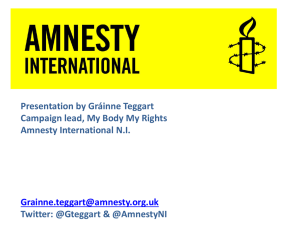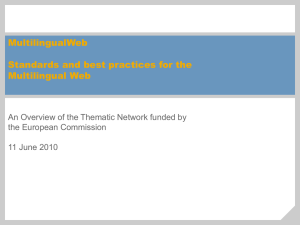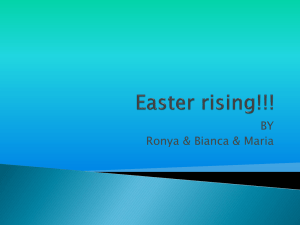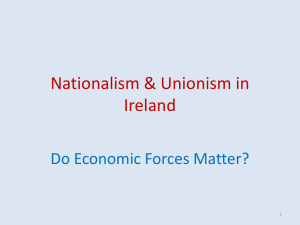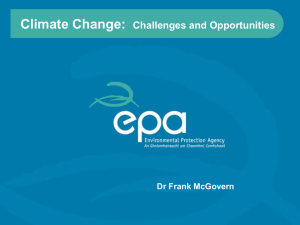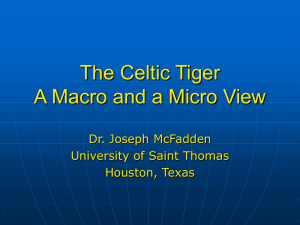Ireland and Migration - Leaving Certificate Geography
advertisement
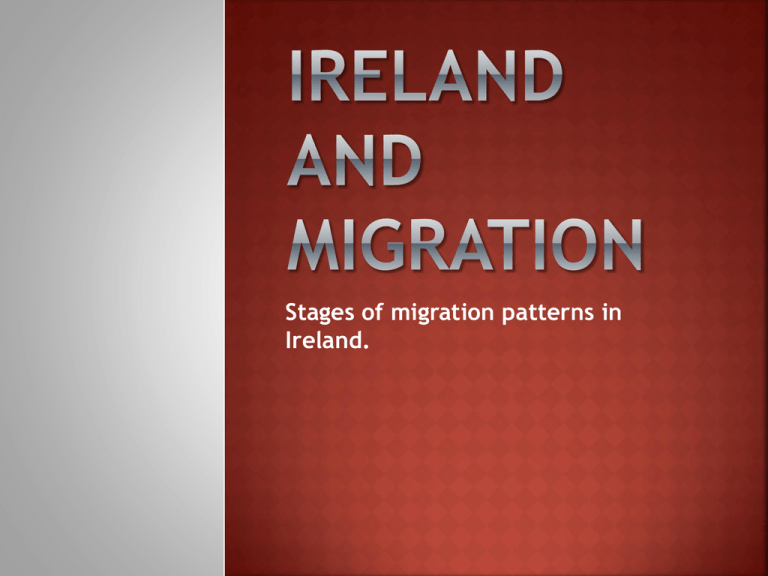
Stages of migration patterns in Ireland. In-migration or out-migration in Ireland: 1: (1840–1960) – post famine population decline = out-migration Stage 2: (1961–1979) – the first economic boom = in-migration Stage 3: (1980–1990) – global economic recession = out-migration Stage 4: (1990–2006) – the Celtic tiger era (second economic boom) = in-migration Stage 5: (2007–present ) – global economic recession = out-migration Stage There was a major post famine decline in population in Ireland due to outward migration/emigration. The famine was the catalyst to a wave of emigration that did not cease until the 1960s. During this period the population of the 26 counties declined from 6.5 million in 1840 to 2.8 million in 1960. It is estimated that up to nearly 3 million people emigrated from Ireland during this period. Ireland consistently had a natural decrease in population despite having the highest birth rates in western Europe, i.e. high rates of emigration were offset by high birth rates. In the 1950s a lack of job opportunities was the key ‘push factor’ to the exodus of over 400,000 people. Economic prosperity and the availability of jobs in the UK, USA and Australia was the key ‘pull factor’ to attract Irish people there. The consequences of emigration for Ireland were as follows: Rural depopulation A near collapse of social life in rural areas An increasing dependency ratio A decrease in the size of the consumer market The first Programme for Economic Expansion was introduced by the then Taoiseach Sean Lemass in the early 1960s and through the IDA (Industrial Development Authority) MNCs (Multi-national companies) were attracted to Ireland, thus creating the backbone to Ireland’s manufacturing industry. This programme was successful in attracting modern footloose industries and thus began Ireland’s industrial revolution. This resulted in stemming the flow of emigration as jobs were created and Ireland experienced its first wave of net inward migration since the famine of the 1840s. Economic expansion accelerated into the 1970s when we joined the EEC (now the EU) in 1973 and this gave Ireland a larger market for exports, an inflow of money, a reduced reliance on the UK market and consequently a positive balance of trade. Increasing world oil prices triggering a global downturn saw the return of economic recession in the 1980s and emigration increased once again with over 200,000 people leaving Ireland. This emigration was different from the previous years as it was predominantly the more highly educated and skilled people who left, thus creating a brain drain from Ireland. The 1980s also witnessed a decline in the total number of births as the country was reaching stage 4 on the demographic transition model. The early 1990s saw the beginning of the Celtic Tiger, i.e. a period of unprecedented economic growth. The economy boomed and there was a shortfall of workers in the labour market, which was filled by immigrants predominantly from the former soviet dominated Eastern Bloc countries that entered the EU in 2004. This resulted in a net in-migration rather than net out-migration. Ireland through a combination of good luck, good timing and good policies caught the crest of a geographical and technological wave and has ridden it to a prosperity that nobody expected. This period up to 2006 saw an increase in population through immigration by nearly 500,000 from mostly nonIrish citizens and this led therefore to a large increase in the overall population. According to the 2006 census, 14% of people living in Ireland were born outside the state. In late 2007 global recession returned and consequently a dramatic slowdown in the Irish economy has resulted in annual growth rates way below 2006 levels. High levels of unemployment seem at present to be enticing non-native immigrants to leave Ireland in search of employment elsewhere, despite the fact that other countries are suffering the same economic fate. This will lead to a net out-migration for the foreseeable future until economic fortunes turn favourable again.


